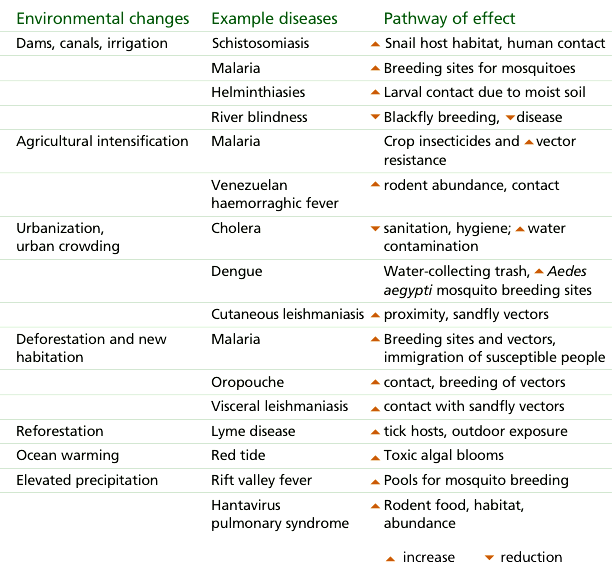Biodiversity & Environment
Climate Change & Infectious Diseases
- 14 Dec 2021
- 3 min read
Why in News
According to a recent study published in the journal ‘Science of the Total Environment’, scientists have found that climate change parameters accounted for 9-18% of the total infectious disease cases.
- Climate change driven by anthropogenic activities may challenge the gains in public health over the past many years, particularly in a country like India that ranks high in the list of climate-vulnerable countries in the world.
Key Points
- Highlights of the Report:
- Vulnerability of Children: Globally, it is estimated that children are to bear most of the burden of disease due to climate change, with the poorest disproportionately affected.
- The higher risk associated with children is due to the combination of physiological vulnerability as well as the risk of exposure.
- Affecting Factors: Climate parameters like temperature, humidity, rainfall, solar radiation, and wind speed were significantly associated with the infectious diseases-- gastrointestinal diseases, respiratory diseases, vector-borne diseases, and skin diseases.
- Impact: Socio-economic conditions and child anthropometry (study of the measurements and proportions of the human body) modified the climate-disease association with a high proportion of children found suffering from stunting, wasting, and underweight conditions.
- Vulnerability of Children: Globally, it is estimated that children are to bear most of the burden of disease due to climate change, with the poorest disproportionately affected.
- Example of Climate Change and Infectious Diseases Linkage:
- Malaria is of great public health concern, and seems likely to be the vector-borne disease most sensitive to long-term climate change.
- Malaria varies seasonally in highly endemic areas. The link between malaria and extreme climatic events has long been studied in India, for example.
- Early last century, the river-irrigated Punjab region experienced periodic malaria epidemics.
- Excessive monsoon rainfall and high humidity was identified early on as a major influence, enhancing mosquito breeding and survival.
- Recent analyses have shown that the malaria epidemic risk increases around five-fold in the year after an El Niño event.

- Malaria is of great public health concern, and seems likely to be the vector-borne disease most sensitive to long-term climate change.
Way Forward
- Changes in infectious disease transmission patterns are a likely major consequence of climate change. Thus, there is a need to learn more about the underlying complex causal relationships, and apply this information to the prediction of future impacts, using more complete, better validated, integrated, models.
- Government and policymakers need to prioritize effective measures for child health as the present association may increase disease burden in the future under climate-change scenarios in an already malnourished pediatric population through multiple pathways.






